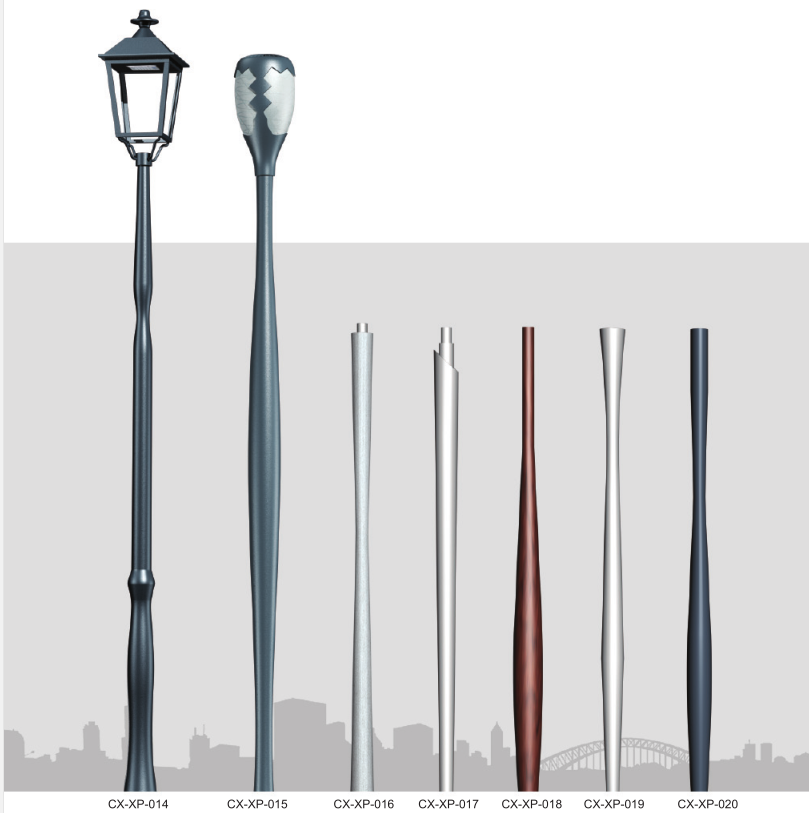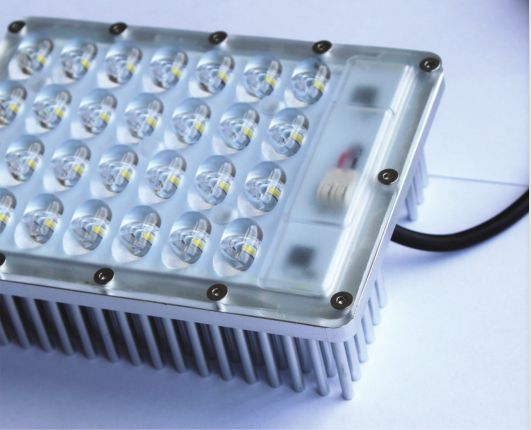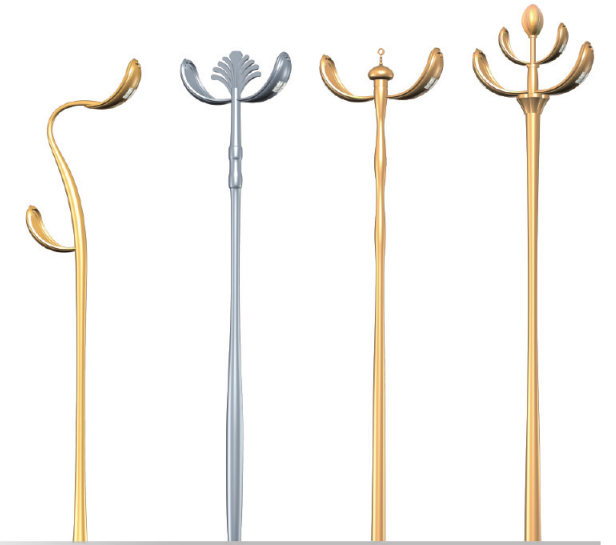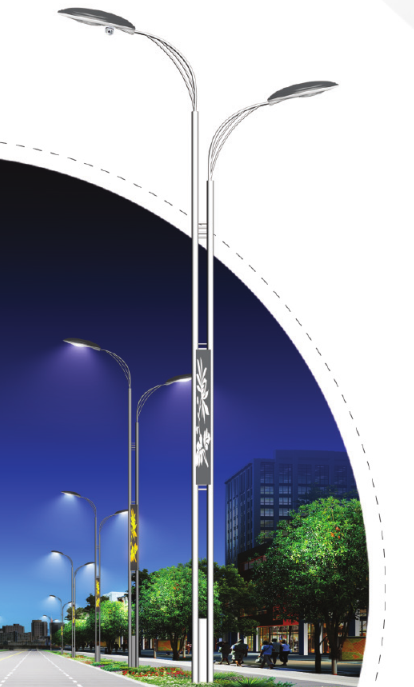
Figure 5
1. The structure and characteristics of commonly used capacitors. Commonly used capacitors are classified into paper dielectric capacitors, oil-immersed paper dielectric capacitors, metallized paper dielectric capacitors, mica capacitors, film capacitors, ceramic capacitors, electrolytic capacitors, etc. Table 7 is the structure and characteristics of several commonly used capacitors.
Table 7 Structure and characteristics of several commonly used capacitors
Type of capacitor | Capacitor structure and characteristics |
Paper dielectric | Two pieces of metal foil are used as electrodes, sandwiched in extremely thin capacitor paper, rolled into a cylindrical or flat cylindrical core, and then sealed in a metal shell or insulating material (such as lacquer, ceramic, glass glaze, etc.) shell. It is characterized by its small size and large capacity. However, the inherent inductance and loss are relatively large, which is more suitable for low frequency. |
Mica capacitor | A metal foil or a silver layer sprayed on the mica sheet is used as the electrode plate. After the electrode plate and the mica are laminated one by one, they are die-casted in bakelite powder or sealed in epoxy resin. It is characterized by low dielectric loss, large insulation resistance, and low temperature coefficient, and is suitable for high-frequency circuits. |
Ceramic capacitors | Using ceramic as the medium, the silver layer is sprayed on both sides of the ceramic substrate, and then the silver film is fired to make the polar plate. Its characteristics are small size, good heat resistance, low loss, high insulation resistance, but small capacity, suitable for high-frequency circuits. |
Film capacitor | The structure is the same as the paper dielectric capacitor, the medium is polyester or polystyrene. Polyester film capacitors, with high dielectric constant, small size, large capacity and good stability, are suitable as bypass capacitors. |
Metallized paper dielectric capacitor | The structure and paper capacitance are basically the same. It is to cover the capacitor paper with a metal film instead of metal foil. It has a small volume and a large capacity, and is generally used in low-frequency circuits. |
Oil-immersed paper dielectric capacitor | It is to immerse the paper dielectric capacitor in specially treated oil to enhance its pressure resistance. It is characterized by large electric capacity and high withstand voltage, but large in size. |
Aluminum electrolytic capacitors | It is made of aluminum cylinder as negative electrode, which is filled with liquid electrolyte, and inserted into a curved aluminum band as positive electrode. It also needs to undergo DC voltage treatment to form an oxide film on the positive electrode as a medium. It is characterized by large capacity, but large leakage, poor stability, positive and negative polarity, suitable for power supply filtering or low-frequency circuits. When in use, do not reverse the positive and negative poles. |
Tantalum and niobium electrolytic capacitors | It is made of metal tantalum or niobium as the positive electrode, dilute sulfuric acid and other liquids as the negative electrode, and an oxide film formed on the surface of tantalum or niobium as the medium. It is characterized by small size, large capacity, stable performance, long life, large insulation resistance, and good temperature characteristics. Used in equipment with higher requirements. |
Semi-variable capacitance | Also called trimmer capacitor. It is made of two or two sets of small metal shrapnel with a medium in between. When adjusting, change the distance or area between the two pieces. Its medium includes air, ceramics, mica, thin film, etc. |
Variable capacitance | It consists of a set of fixed pieces and a set of moving pieces. Its capacity can change continuously with the rotation of the moving pieces. Putting two sets of variable capacitors together to rotate coaxially is called double connection. The medium of variable capacitance includes air and polystyrene. The air medium variable capacitor has large volume and low loss, and is mostly used in tube radios. The polystyrene dielectric variable capacitor is made sealed, small in size, and is mostly used in transistor radios. |
2. Nominal capacity and allowable error. The number of capacitors marked on the capacitor is the nominal capacity of the capacitor. There will be an error between the nominal capacity of the capacitor and its actual capacity. See Table 8 for the tolerance levels of commonly used fixed capacitors. See Table 9 for the nominal capacity series of commonly used fixed capacitors.
Table 8 Commonly used fixed capacitors allowable error level
Allowable error | ± 2% ± 5% ± 10% ± 20% (+ 20% -30%) (+ 50% -20%) (+ 100% -10%) |
level | 02 â… â…¡ â…¢ â…£ â…¤ â…¥ |
Table 9 Nominal capacity series of commonly used fixed capacitors
Capacitor category | Allowable error | Capacity range | Nominal capacity series |
Paper dielectric capacitors, metallized paper dielectric capacitors, paper film composite dielectric capacitors, low frequency (polar) organic thin film dielectric capacitors | ± 5% | 100pF ~ 1uF | 1.0 1.5 2.2 3.3 4.7 6.8 |
1uF ~ 100uF | 1 2 4 6 8 10 15 20 30 | ||
High frequency (non-polar) organic film dielectric capacitors, ceramic dielectric capacitors, glass glaze capacitors, mica capacitors | ± 5% | 1.1 1.2 1.3 1.5 1.6 1.8 2.0 2.4 2.7 3.0 3.3 3.6 3.9 4.3 4.7 5.1 5.6 6.2 6.8 7.5 8.2 9.1 | |
± 10% | 1.0 1.2 1.5 1.8 2.2 2.7 | ||
± 20% | 1.0 1.5 2.2 3.3 4.7 6.8 | ||
Aluminum, tantalum, niobium, titanium electrolytic capacitors | ± 10% | 1.0 1.5 2.2 3.3 4.7 6.8 |
3. The withstand voltage of the capacitor. Capacitors work reliably for a long time. The maximum DC voltage they can bear is the withstand voltage of the capacitor, also known as the DC working voltage of the capacitor. If in an AC circuit, it should be noted that the maximum value of the applied AC voltage cannot exceed the DC working voltage of the capacitor.
Table 10 is a series of commonly used fixed capacitor DC operating voltage. Values ​​with * are limited to electrolytic capacitors.
Table 10 DC voltage series of commonly used fixed capacitors
1.6 4 6.3 10 16 25 32 * 40 50 63 |
Table 11 Types and symbols of capacitors
order | category | name | Abbreviation | title |
first letter | Main title | Capacitor | Content | C |
Second letter | Dielectric material | Paper medium Electrolysis Mica High frequency porcelain medium Low frequency porcelain medium Metalized paper medium Organic film such as polystyrene Polyester organic film | Paper electric cloud porcelain | Z |
After the third letter |
| Tubular tubular vertical rectangular wafer | Bobbin standing round | T |
structure | seal | dense | M | |
size | Small | small | X |
4. Insulation resistance of the capacitor. Since the medium between the two poles of the capacitor is not an absolute insulator, its resistance is not infinite, but a finite value, generally above 1000 megohms. The resistance between the two poles of the capacitor is called the insulation resistance, or leakage resistance. The smaller the leakage resistance, the more serious the leakage. Leakage of the capacitor will cause energy loss. This loss will not only affect the life of the capacitor, but also affect the operation of the circuit. Therefore, the larger the leakage resistance, the better.
5. Types and symbols of capacitors. There are many types of capacitors. In order to distinguish them, a few Latin letters are often used to indicate the type of capacitor, as shown in Figure 6. The first letter C represents capacitance, the second letter represents dielectric material, and the third letter represents shape, structure, etc. The picture above is a small paper dielectric capacitor, and the picture below is a vertical rectangular open paper dielectric capacitor. Table 11 lists the types and symbols of capacitors. Table 12 shows the characteristics of common capacitors. 
Image 6
Table 12 Several characteristics of common capacitors
Type of capacitor | Capacity range | DC working voltage (V) | Operating frequency (MHz) | Accuracy | Leakage resistance (MΩ) |
Small and medium paper capacitors | 470pF ~ 0.22uF | 63 ~ 630 | 8 or less | â… ~ â…¢ | > 5000 |
Metal shell sealed paper dielectric capacitor | 0.01uF ~ 10uF | 250 ~ 1600 | DC, | â… ~ â…¢ | > 1000 ~ 5000 |
Medium and small metalized paper dielectric capacitors | 0.01uF ~ 0.22uF | 160, 250, 400 | 8 or less | â… ~ â…¢ | > 2000 |
Metal shell sealed metallized paper dielectric capacitor | 0.22uF ~ 30uF | 160 ~ 1600 | DC, | â… ~ â…¢ | > 30 ~ 5000 |
Film capacitor | 3pF ~ 0.1uF | 63 ~ 500 | High frequency, low frequency | â… ~ â…¢ | > 10000 |
Mica capacitor | 10pF ~ 0.51uF | 100 ~ 7000 | 75 ~ 250 or less | 02 ~ â…¢ | > 10000 |
Porcelain dielectric capacitor | 1pF ~ 0.1uF | 63 ~ 630 | Low frequency, high frequency | 02 ~ â…¢ | > 10000 |
Aluminum electrolytic capacitors | 1uF ~ 10000uF | 4 ~ 500 | DC, | ⅣⅤ | |
Tantalum and niobium electrolytic capacitors | 0.47uF ~ 1000uF | 6.3 ~ 160 | DC, | ⅢⅣ | |
Porcelain dielectric fine-tuning capacitor | 2 / 7pF ~ 7 / 25pF | 250 ~ 500 | high frequency | > 1000 ~ 10000 | |
Variable capacitance | Minimum> 7pF | Over 100 | Low frequency | > 500 |
6. Labeling rules for capacitance units in the circuit diagram. Generally, when the capacity is less than 10000pF, use pF as the unit, and when it is greater than 10000pF, use uF as the unit. For the sake of simplicity, capacitors greater than 100pF and less than 1uF are often not filled with units. The unit without a decimal point is pF, and the unit with a decimal point is uF. For example, 3300 is 3300pF, 0.1 is 0.1uF, etc.
7. Common sense of capacitor use. The actual voltage that the capacitor must withstand in the circuit cannot exceed its withstand voltage. In the filter circuit, the withstand voltage of the capacitor should not be less than 1.42 times the effective value of the AC. When using electrolytic capacitors, be careful not to reverse the positive and negative poles.
Different circuits should use different types of capacitors. For the tapping circuit, mica and high-frequency ceramic capacitors can be used. For DC isolation, paper, polyester, mica, electrolysis, and ceramic capacitors can be used. For filtering, electrolytic capacitors can be used. For bypass, polyester, paper, ceramic, and electrolytic capacitors can be used.
Before installing the capacitor into the circuit, check whether it has short circuit, open circuit and leakage, and check its capacitance value. When installing, make sure that the symbols such as the type, capacity, and withstand voltage of the capacitor are easy to see for verification.
The new product line is the characteristic product of our company's production and development, mainly including the Anti-corrosive Aluminum alloy spinning lamp pole,Solar Camera light,Cylindrical Intelligent Street Lamp,No power LED Module .




1.Aluminum alloy spinning lamp pole
The spinning pole is the use of foreign advanced spinning equipment,forming a whole without welding,forming a conical or profiled bar.And then polishing,remove surface oil,burr and indentation.Then after the quenching intensity,to T6 state,in line with international standards.The product never rust ,strong corrosion resistance,diversified surface treatment process,the appearance of simple fluid lines.Light weight and convenient installation and transportation,the rod body can be 100%recycling,low melting temperature.
Product features
â‘ Using spinning equipment advanced,the whole forming a non welding
â‘¡Product permanent does not rust,corrosion resistance
â‘¢Diversified surface treatment technology,make the appearance line succinct smooth
â‘£The light weight,convenient installation and transportation
⑤The rod body can be 100% recycling,melting temperature is low.

2.Camera street light
The camera street light is used to use the infrared network high definition intelligent ball's various features so that it can be widely used in the need of large-scale hd quality control of the site.
Functional properties
â‘ Smart Function:Smart Tracing,Smart Inspecting,Smart Road Monitor
â‘¡System Function:Smart Video,Smart Photo Enhancement
â‘¢Movement Function
â‘£Network Function

3.Intelligent Street Lamp
Intelligent Street Lamps are also called intelligent lighting or smart street lights.It adopts the Internet of things and cloud computing technology to comprehensively upgrade the urban public lighting management system, so as to realize centralized control, operation and maintenance information and intelligent lighting of street lamps.The most advanced versions of Intelligent Street Lamps have been designed to create a happy atmosphere in roads, streets, squares and other places.The design of intelligent street lamps can only be designed by a wide range of discussions and environments that provide an aesthetic consistency.
Product feature
1.Sensor
Monitoring urban environment conditions
Sensor norise
Air pollution sensor
Temperature/humidity sensor
Brightness sensor
Municipal construction monitor
2.RFID
Special crowed monitor
CMC monitor
Community security monitor
Municipal facilities monitor
3.Communication Services
Micro base station
Street lights embedded WIFI hot spot
4.Video Monitor
Security monitor
Vehicle monitor
5.Emergency Broadcast
Active of the external field radio monitoring center
6.Intelligent Lighting
Cellular cooling technology
Based on the luminance uniformity of light distribution
Intelligent single lamp/center controller
Variety of modular design lamp,holder is optional.
7.Information Release
Advertising exposure
Current politics news
Information release
8.Charging Column
Electric car
Electric bicycle

4. Led Module
â— The unique acicular radiator,360 degree dissipation small wind resistance. High heat dissipation efficiency ensuring that the LED chip can work for 50000 hours.â— Color temperature 3000-6000K
◠Light≥90LM/W
â— Matching the 2.3.4 lane,tunnel and Landscape Lamp,floodlight dedicated lens.Ensure that intensity and uniformity.
â— Glare index Signification reduce the original LED module size,removal of power supply problems.Low demands for application situation and installation personnel .More suitable for the transformation of traditional lamps.
Product features
â‘ The solid heat conduction,Plug-in package technology
â‘¡Alternating current method,Alternating current direct drive to overturn the traditional application.
â‘¢Avoid long-distance power.Transfer will have excess loss.
â‘£No power supply ACLED
⑤Customized LED lens
â‘¥Automatic dimming system intelligent.
⑦Wide application,flexible combination.
Aluminum Alloy Spinning Lighting Pole,Lightest Aluminum Alloy,Aluminum Alloy Torchlight,Lightweight Aluminum Alloy
Jiangsu chengxu Electric Group Co., Ltd , https://www.satislighting.com